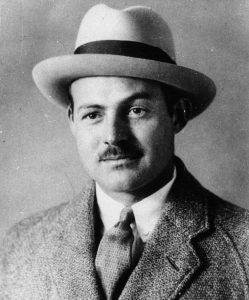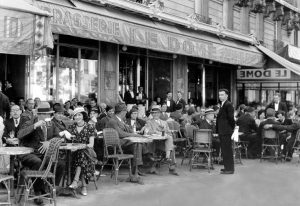Hemingway’s life in Paris constituted only five years of his existence, between 1921 and 1925, yet it would become for him an indelible landscape, synonymous with happiness but also with destruction and disillusionment. He arrived in Paris with his wife Hadley on December 20, 1921. A year earlier he had been dragging his boredom and malaise between Oak Park, Chicago and Canada, where he had begun to write for the Toronto Star. Several short stories also date from this time: “The Mercenaries” set in Sicily, which he visited during the war (WW 1), “The Current” and also “Crossroads: An Anthology.” The magazines to which he sent the pieces all rejected them. Hemingway began to doubt himself and started thinking about traveling to Europe.

The American writer Sherwood Anderson explained to the aspiring young writer that the best way to learn the craft of writing was to go to Paris. In addition, he pointed out that because of the favorable exchange rate, an American could live better in Paris than at home. Anderson also introduced Hemingway to people like Gertrude Stein, James Joyce and Ezra Pound. Getting to know them and embracing the Parisian elite of the arts and their fascination with modernism, would greatly widen his views.
By the end of November 1921 everything was prepared: Hemingway would be the Paris correspondent of the Toronto Star, and at the same time learn the craft while learning from some of the already more established writers and artists.

“Maybe away from Paris I could write about Paris as in Paris I could write about Michigan,” wrote Hemingway in A moveable Feast. And indeed, it was only in Cuba that he would write about the French capital, but it was in Paris that an essential phase in his writing career occurred.
The above text is for a great part from “Hemingway – A life in picture”, B. Vejdovsky with M. Hemingway
